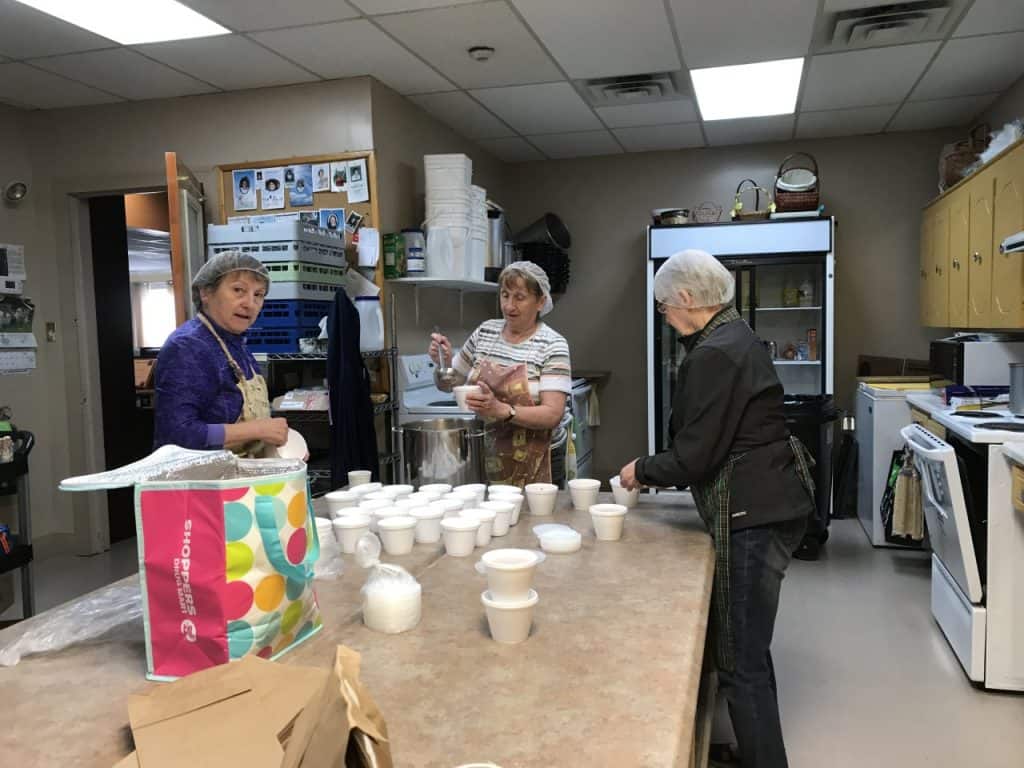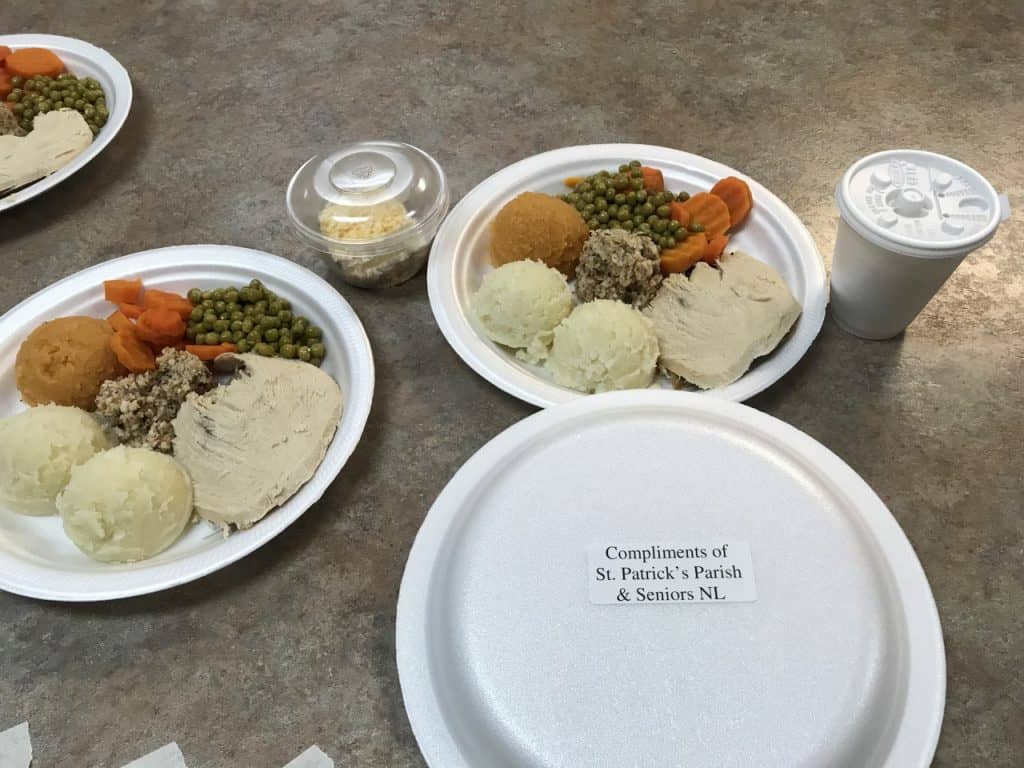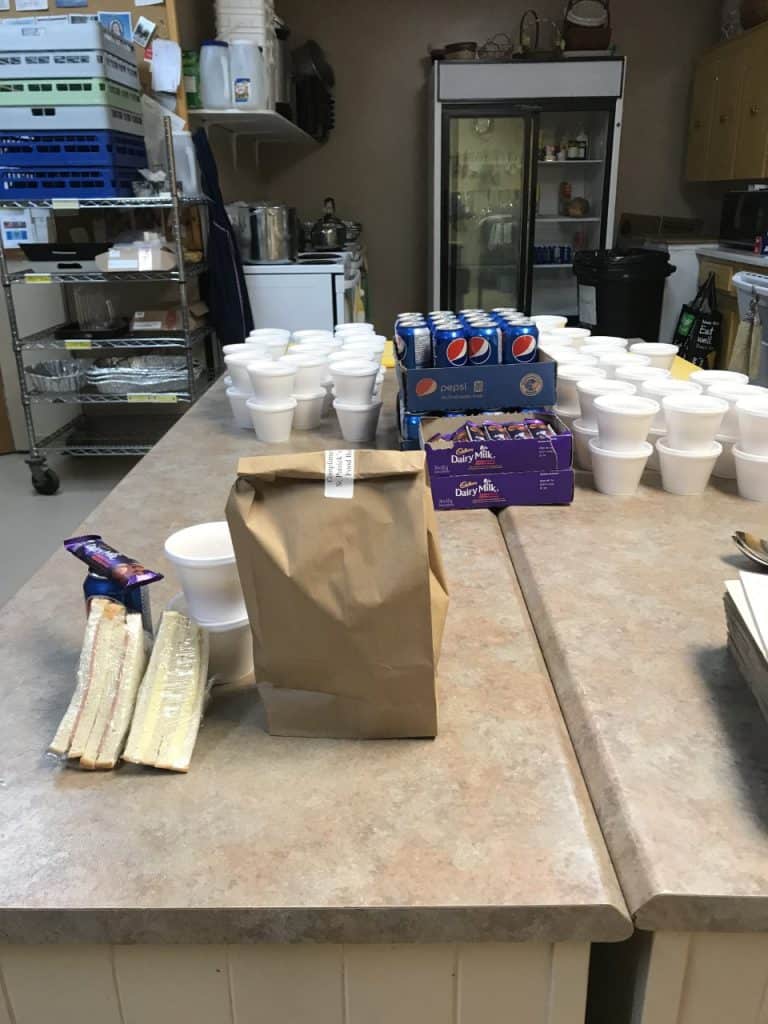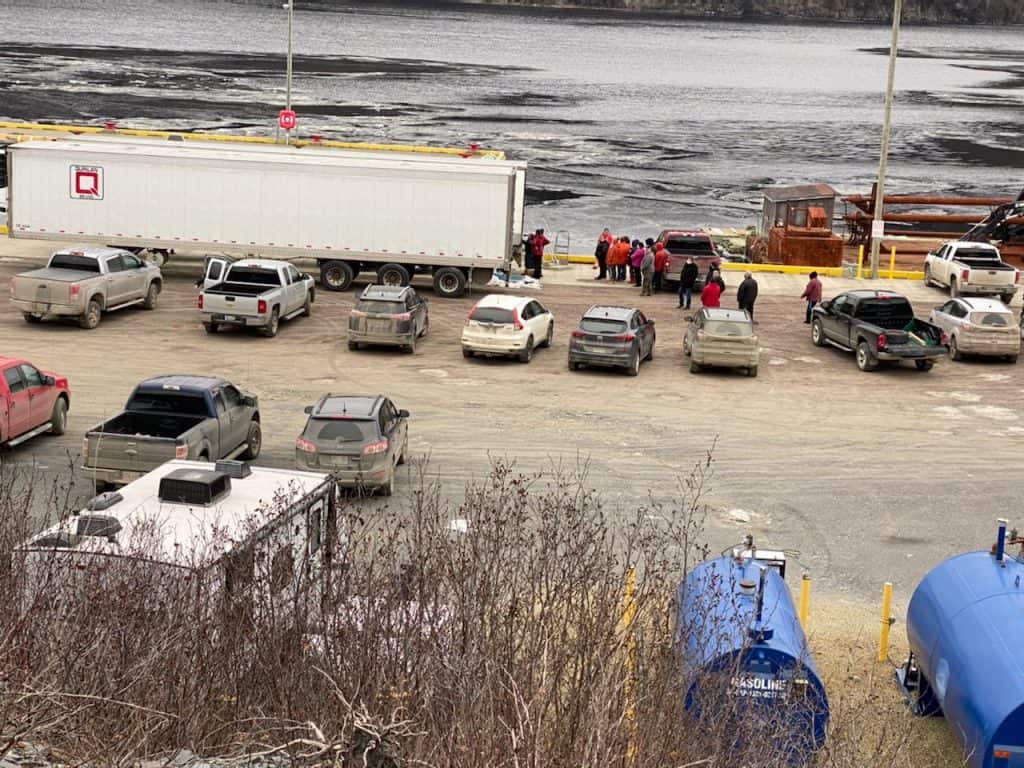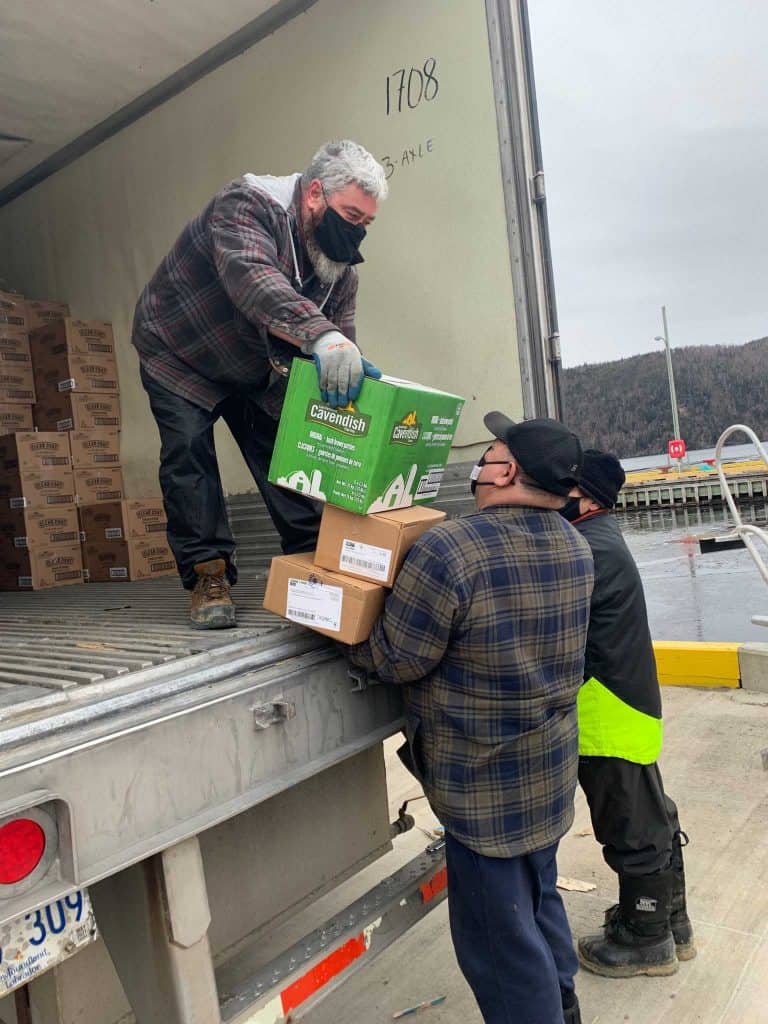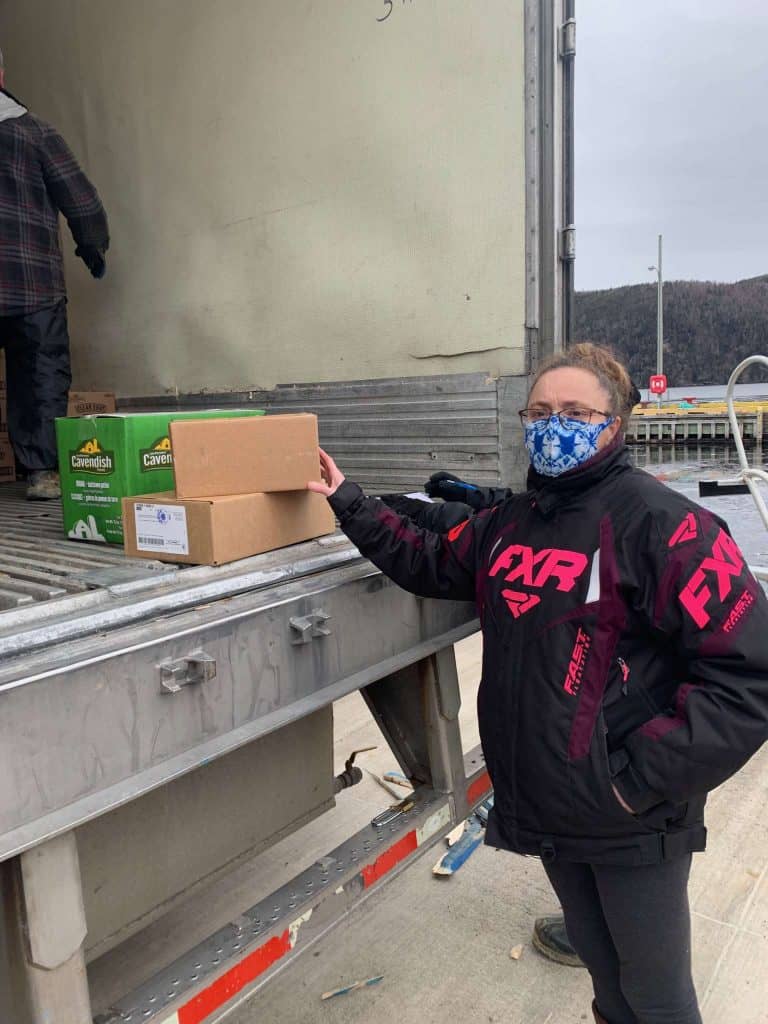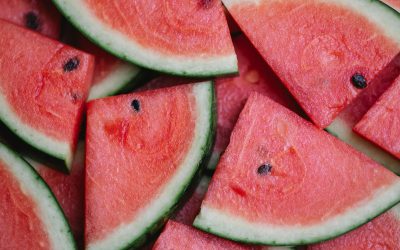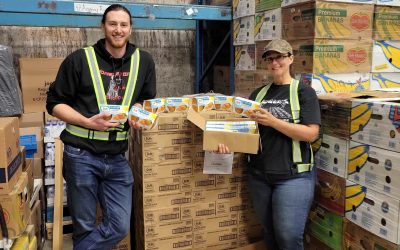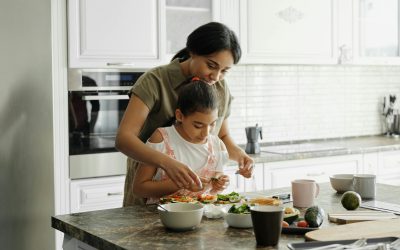The pandemic forced us all to adapt. Come together. Help each other. Support the local community. This is something that Atlantic Canadians already know so well. It’s what you do on the east coast of Canada. You help your own and adapt to work with your environment, not against it.
Community initiatives to feed vulnerable folks and those in need in Atlantic Canada have been forced to adapt to work with COVID-safety protocols and practice social distancing.
In Prince Edward Island, a local library opened a community fridge and essentials cabinet, both full of free items for those in need. There are drive-thru pickups of hot dinners for takeaway, brown bag lunches and healthy snacks, plus food hampers home deliveries operating in rural communities in Newfoundland and Labrador. Community freezers are running regularly in Nunatsiavut communities as well as in the Miawpukek First Nation, in Newfoundland and Labrador.
Today we have two inspirational stories of how Second Harvest supported Atlantic Canadians in Newfoundland and Labrador as they adapt to the pandemic to bring food to their community members who need it most.
A Small but Mighty Team Organizes Drive-thru Food Pickups and Home Deliveries
Eight volunteers, most of whom are seniors, run St. Patrick’s Parish Food Bank, a small rural operation in Newfoundland and Labrador. From the basement of a church, they serve food to families in need in the Burin Penisula as well as St. Lawrence, Lawn, Garnish, Frenchman’s Cove and Winterland.
St. Patrick’s typically serves 25 to 30 families per month and in the past had to rely on food and monetary donations from the local community to fulfill the need. Making connections to larger donors for food donations, and to Walmart Canada, whose grant helped them buy a cooler to store more fresh and perishable foods, enabled St. Patrick’s to build capacity and serve their families better.
And then the pandemic hit and their in-person services had to change. St. Patrick’s received government and community support and was able to shift gears to serve good, healthy food to both existing clientele and other vulnerable community members in a safe way.
“St. Patrick’s Food Bank has been extremely busy despite the pandemic,” says Jeannette Lundrigan, Food Bank Coordinator. Amazingly, this small crew coordinated home delivery of nearly 500 brown-bag lunches and more than 400 hot dinners, and set up a drive-thru which has provided everything from frozen food hampers, turkey and fresh veggie hampers and even $5,000 in grocery gift cards provided by The Sprott Foundation through Second Harvest.
“The most significant improvement has been the increased quality and quantity of food provided to our patrons, thanks to the generous support of charities like Second Harvest – we could not do it without you all,” says Lundrigan. “The positive responses from our patrons make it all worthwhile.”
The support St. Patrick’s gives to their community even extends to their fellow service providers: they also shared gift cards with a neighbouring food bank that was struggling. It is amazing what this handful of volunteers has accomplished during a time of global uncertainty. Lundrigan says it best:
“We might be small but we are mighty strong!”
75,000 Pounds of Food Arrives at the Mi’kmaq Community Just in Time
On the southern tip of the Island of Newfoundland in Conne River is the Miawpukek First Nation. We spoke with the Mi’kmaq community General Manager, Theresa O’Keefe, to understand how the pandemic impacted the way that they feed their community, which includes approximately 1,000 on-reserve members as well as those off-reserve.
Before the pandemic, the First Nation offered social support programs and employment services to the Mi’kmaq community, including seasonal employment programs for able-bodied folks. Some program initiatives included offering as-needed food vouchers and providing snacks, bread and monthly supper clubs to an elders’ club, student lunch and learn programs and cooking classes for youth.
When the pandemic hit, the First Nation adapted their programs to follow COVID-safety protocol—and got to work ensuring that they could continue to provide for the community.
“We faced concerns regarding the potential shortage of food due to interruptions to the supply chain,” Theresa O’Keefe said. “We get food delivered via ferry to the island, so securing food was a tremendous relief for our community.” She also explained that they struggled to get enough PPE and cleaning supplies at the onset of the pandemic. This too, thankfully, has been remedied.
They applied to Second Harvest for rescued food to distribute to 350 households in the community—and received over 75,000 pounds of food through the Surplus Food Rescue Program. They enlisted department staff and community volunteers to store and distribute food.
Funding for COVID food security helped them secured freezer reefers (container fridges), including one from their community commercial fishing program and an outside fishing company partner. This made it easier to receive and store frozen food for the harsh Atlantic Canadian winter.
“We have extra food stored so we can continue to support the needs of our most vulnerable groups,” O’Keefe said. “We also supported our local food centre in our area which services our First Nation membership off-reserve and other families, so our vulnerable families surrounding our community could benefit from extra food as well. This gave us an opportunity to support our extended family members and neighbours and increased our sense of wellbeing.”
When Newfoundland and Labrador closed all non-essential workplaces for six weeks, the community had to postpone seasonal programs, which affected income for many community members, as well as insurance benefits for others.
“Food from Second Harvest has eased the expenses of purchasing food by community members who have had to have extensions to their employment insurance benefits so money can be redirected to other household expenses,” O’Keefe explained. “The food is high quality and focused on starches and proteins, which are very much appreciated by families who would not normally have large quantities at hand.”
“Given the winter and Christmas season where families find themselves with extra expenses for gifts for their family and children and the need for winter clothing, having extra food eased the stress of having to purchase food. Money in the home can then be redirected to other household essentials.”



